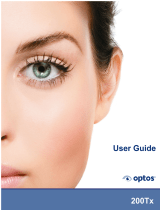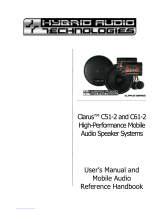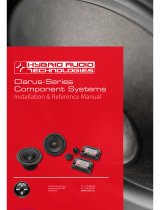
Infrared (IR) reectance image of a healthy eye
Fundus autouorescence-Blue (FAF-Blue) image of
geographic atrophy
External eye image
Fundus autouorescence-Green (FAF-Green) image of
dry age-related macular degeneration
7
Images and diagnoses courtesy of Roger Goldberg, MD, Jesse Jung, MD, and Michael H. Chen, OD**.
Fundus Autouorescence (FAF)
Fundus autouorescence images allow clinicians to visualize lipofuscin uorescence in the retinal pigment
epithelium (RPE), an indicator of RPE health. Healthy RPE appears as a uniform gray color on FAF images.
In general, hyper-autouorescence (bright) indicates RPE damage, and hypo-autouorescence (dark)
indicates dead or absent RPE. FAF-Blue images have been shown to reveal early RPE disruption in macular
degeneration and predict progression of geographic atrophy. FAF-Green images may be less aected by
media opacities such as nuclear sclerotic cataracts.
Infrared (IR)
Infrared light is used to capture these images with the unique property of increased penetration
through tissue, providing improved visualization of choroidal structures. Deeply pigmented structures
absorb infrared wavelengths, resulting in a darker appearance.
External
High-resolution external eye images allow for documentation of ocular surface and adnexa conditions
such as corneal ulcers.
** The diagnoses provided by the healthcare professionals reect only their personal opinions and experiences and do not necessarily reect the opinions of any institution with whom they
are aliated. The healthcare professionals credited in this interpretation guide have a contractual relationship with Carl Zeiss Meditec, Inc., and have received nancial compensation.












